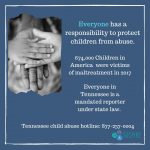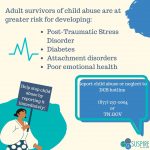In the final step of the NASW’s 9 competencies, the social worker reflects on the 8 methods of professional development and client interaction to determine if the interventions were appropriate, effective, and desirable to the client base. How the social worker evaluates the output of the intervention is by using evidence-based tools designed to measure qualitative and quantitative feedback. The feedback is then compared to data taken from similar studies and deemed successful or unsuccessful.
A competent social worker is aware of the deficit that may exist between their expectations and the reality of the data. With the information presented in this final step, the following steps can be determined by the clinician: the data proves to be inconclusive given specific circumstances, the intervention yielded positive or negative results which were in the normal parameter, or the client expressed dissatisfaction with services. Regardless of the outcome, the social worker now has information which can modify service delivery across micro, mezzo, and macro systems.
Practice Behaviors
9A. Select evidence-based evaluation strategies according to their efficacy with specific client systems
Field Evidence: Prior to presenting Lauren’s Kids to Hamilton County schools, I underwent many memorization and practice sessions with my field instructor and task supervisor. As seen in my December Journal, I document intense anxiety as it relates to going ‘off script’ or being asked difficult questions by the children. In my January Journal there is marked improvement noted in the second and third week of the journal. This comes after internalizing the feedback of my field team, practicing on my own time, and presenting the information smoothly in front of my peers.
In November of last year, I built a guide of effective ways to reach individuals on social media. The purpose of this guide was to utilize pictures, words, and statistics in a palatable format in order to raise awareness about mental health and personal wellness. I created a reference sheet about being an Empath and how to identify Child Abuse. The graphics I created most recently were used during the month of child abuse awareness:
Course Evidence: In the Advanced Clinical Practice I course, I conducted a pseudo-therapy session in which I was the therapist and a classmate had the role of client. In this session I discuss the type of therapy being offered, Cognitive Behavioral Therapy, what it is used for, and how it will help her in the future. At the conclusion of the review I evaluated my perceived progress from the beginning of the semester until that point, what changes I would make to future service delivery, and how I learned from this experience. The review can be found here.
9B. Evaluate the efficiency and effectiveness of practice outcomes across systems
Field Evidence: While interning with the Children’s Advocacy Center, I became familiar with the schools in the Hamilton County area. After delivering the presentation of Lauren’s Kids to a few schools, I began to notice that children who did not have an understanding of English were having trouble following along. I discussed the language barrier and problems this presented with my field instructor during supervision on tow different occasions. The first instance can be found in the fourth week journal of January and the third week of February. Our conversation culminated in a discussion about exclusively accepting bilingual interns for prevention education, and printing the curriculum in Spanish, English, and Creole.
January Journal & February Journal
Course Evidence: In my advanced clinical course I had the opportunity to conduct a group therapy session over Zoom with my classmates. Upon reviewing the video and writing a transcript of the session, I was tasked with critically analyzing my choice of words, intervention, and what I hoped to do with this in future practice. Here is my paper: Self Evaluation and Process Recording

